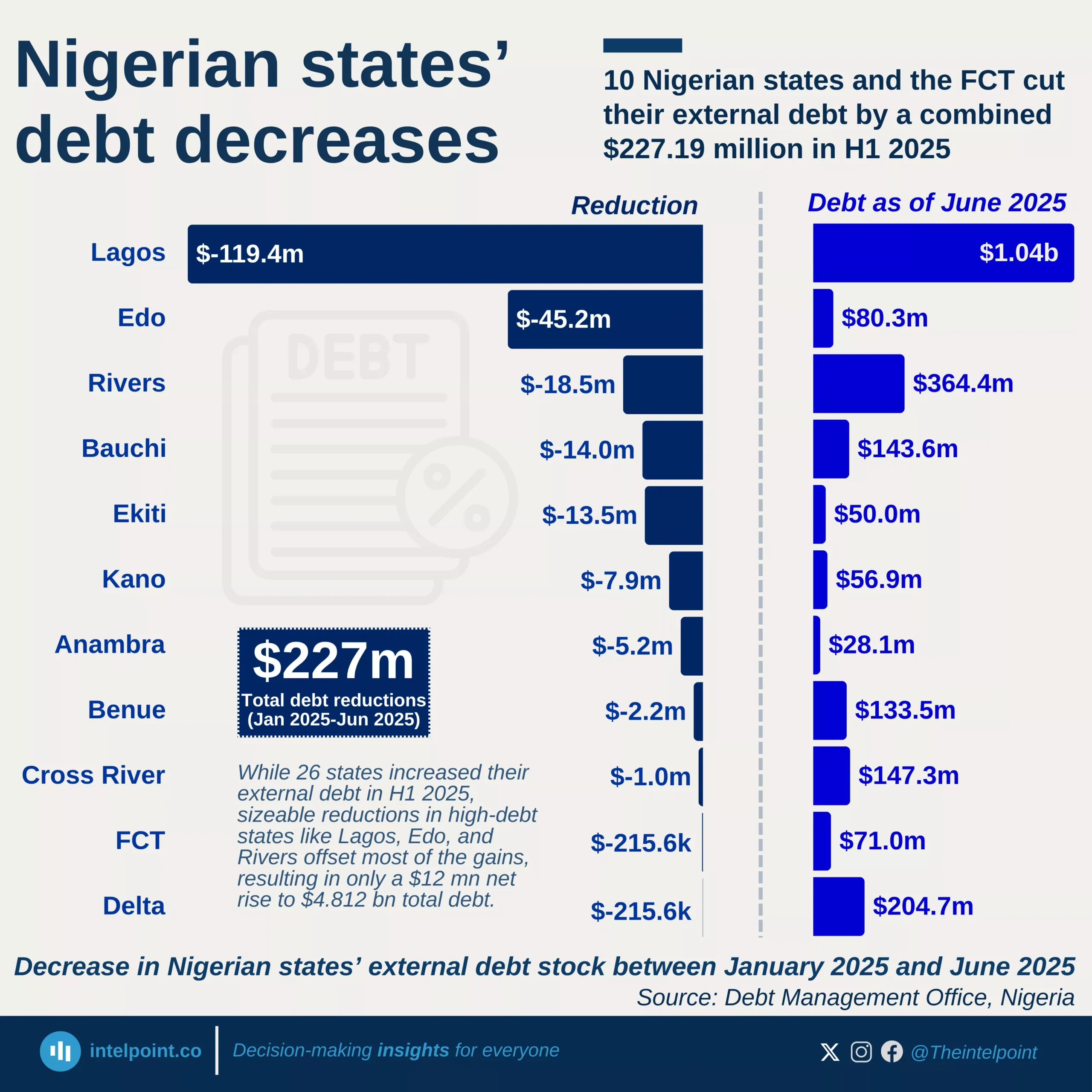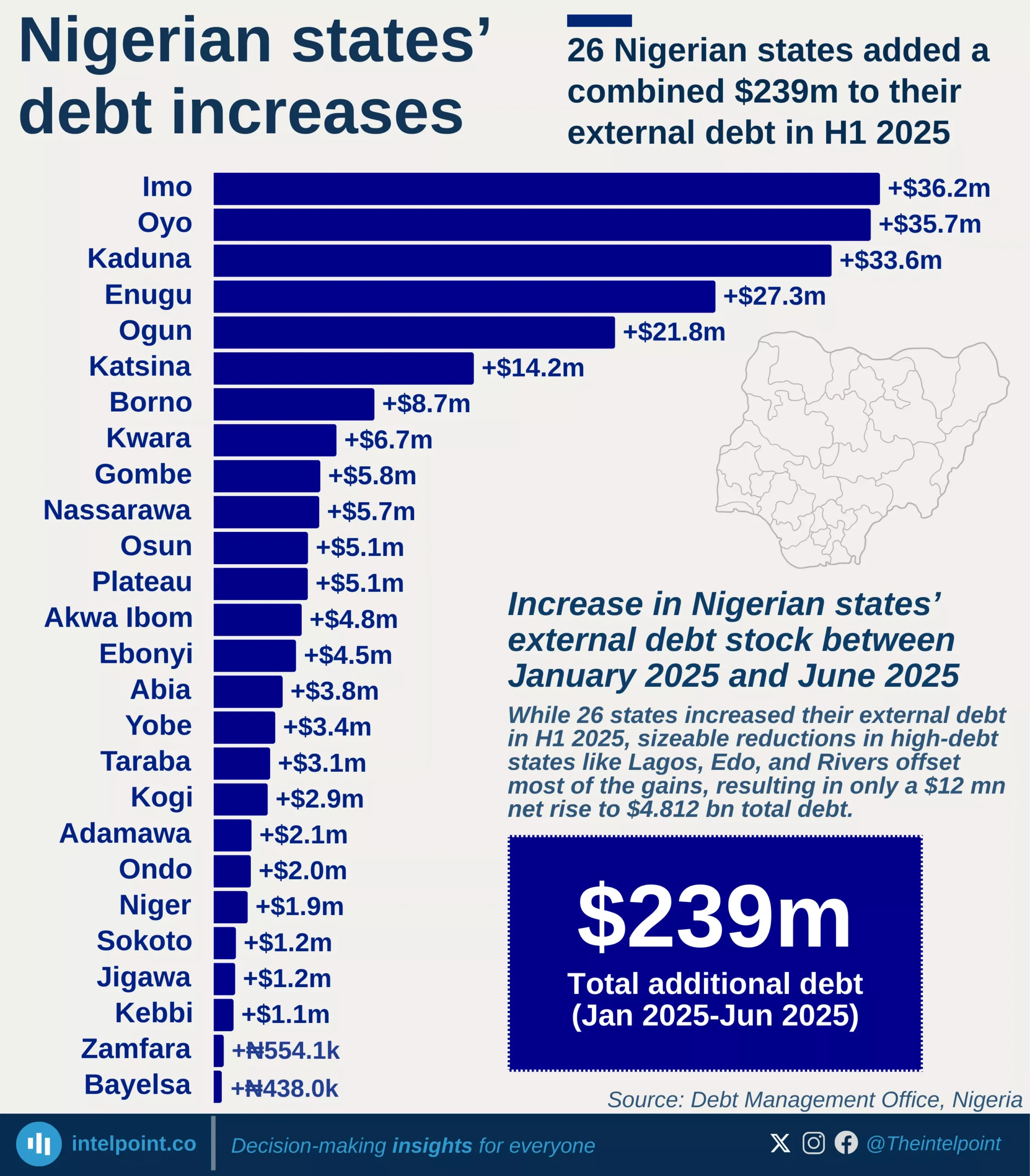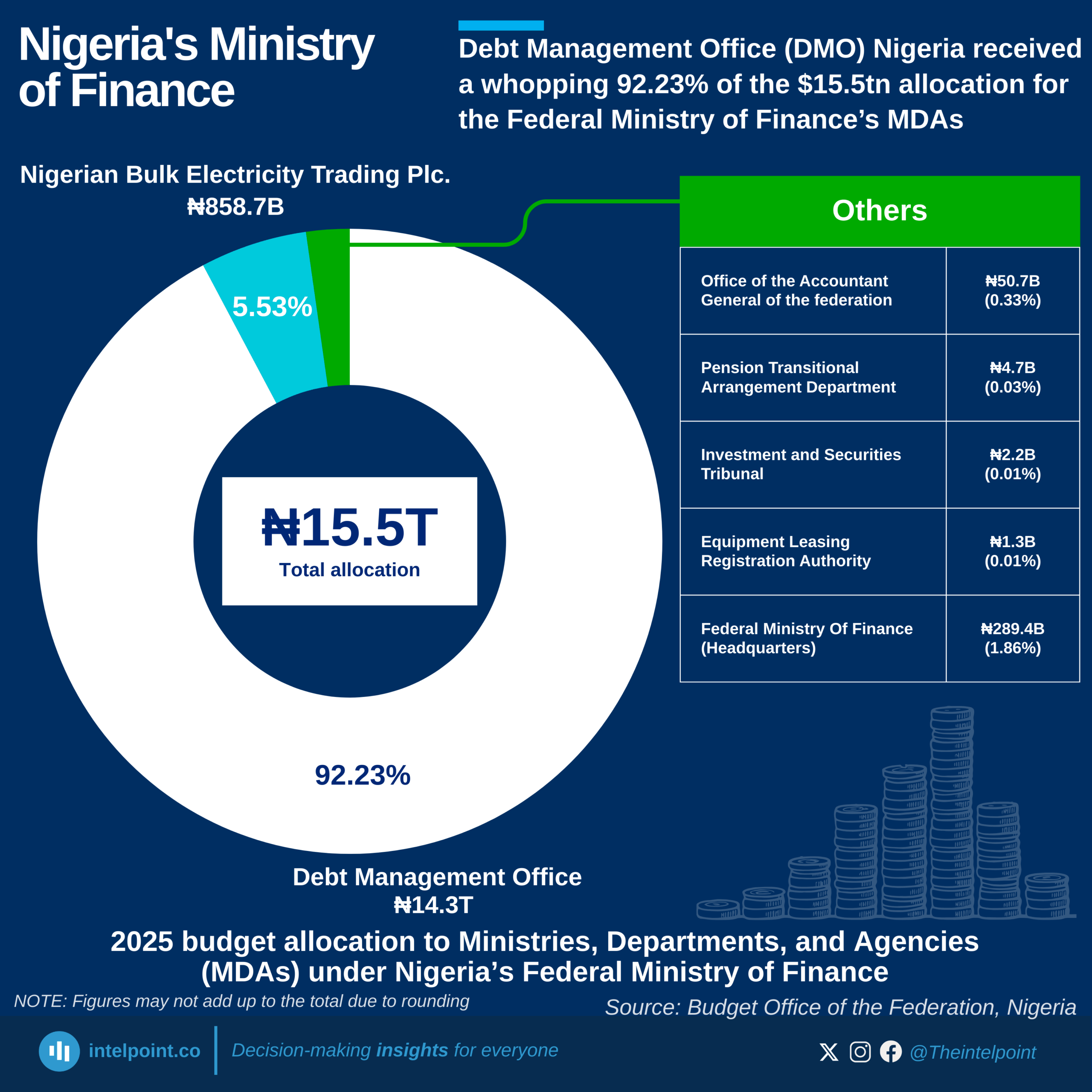Data from Nigeria's National Bureau of Statistics shows that the Federal Allocation Account Committee (FAAC) disbursed at least ₦32.8 trillion net to the 36 states and the FCT since 2011.
Five of Nigeria's oil-producing states — Delta, Akwa Ibom, Rivers, Bayelsa, and Lagos — have received 33.7% of the country's net federal allocation since 2011, with Delta State receiving the most. Kano, Katsina, Borno, Kaduna, and Ondo complete the top ten.





